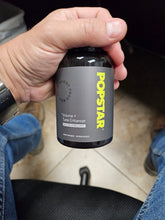Beach Sex, as a medical glossary term in the context of men’s health, refers to intimate activity in a coastal or sandy environment. While often portrayed as a romantic or adventurous encounter, Beach Sex comes with a unique set of considerations. From environmental factors such as sand and saltwater to potential risks including infections or sunburn, understanding the nuances is key to balancing health, comfort, and pleasure. In the following comprehensive guide, we’ll explore essential points and frequently asked questions about Beach Sex, shedding light on its physical, emotional, and legal aspects.
Table of Contents
- Definition and Medical Context
- Pros and Cons
- Potential Risks and Health Considerations
- Safe Practices
- Preparing for Beach Sex
- Maximizing Comfort and Sensation
- Common Questions
- Conclusion
Definition and Medical Context
Beach Sex generally involves sexual intimacy on or near a sandy shoreline, with the presence of environmental elements such as sun, surf, wind, and sand. From a medical standpoint, it is crucial to recognize how these elements can affect the body. Sand, for instance, can exacerbate friction, potentially causing abrasions or irritation to sensitive skin. Saltwater, while not inherently harmful, can disrupt the natural pH balance of genital areas if not addressed properly.
For men’s health, “Beach Sex” encompasses not only the physical act but also social, psychological, and legal components. In certain regions, public sex—beach settings included—can be classified as a legal offense, so ensuring consent, privacy, and awareness of local regulations is essential to maintain safety and legality.
From a medical lens, proper lubrication and post-activity hygiene become significant. Sexual activity in a sandy environment can lead to increased risk of small cuts, potential infection, or inflammation if the particles of sand come into contact with mucous membranes. Furthermore, constant exposure to sunlight could mean additional risks of sunburn or heatstroke if individuals do not stay hydrated or use sunscreen. Understanding these risks can help individuals make informed decisions and take proactive steps to protect their health. Although Beach Sex can carry a certain allure or spontaneity, it is not without potential complications—both from a health perspective (such as sand-induced abrasions or increased risk of urinary tract infections) and from a legal standpoint where public nudity laws apply.
Pros and Cons
The idea of engaging in sexual activity on a scenic shoreline can be irresistibly glamorous, conjuring images of romantic sunsets and gentle waves. Yet, it’s important to weigh the advantages and disadvantages in a balanced manner.
Pros:
- Atmospheric Setting: The beach provides sensory stimulation—a gentle breeze, the smell of saltwater, and the sound of crashing waves, which some individuals find heightens intimacy and pleasure.
- Sense of Adventure: Trying something new or unexpected can invigorate relationships, nurturing excitement and passion.
- Natural Surroundings: Sunlight and fresh air can boost mood and energy, potentially enhancing the overall experience.
Cons:
- Risk of Public Exposure: Depending on the laws of the shoreline, engaging in public sexual activity can attract legal consequences and social discomfort.
- Physical Discomfort: Sand can get into unwanted places, causing abrasions or discomfort during movement.
- Hygiene Issues: Saltwater, sand, and heat can disrupt the body’s natural balance, potentially increasing infection risk if not mitigated.
- Sun Exposure: Prolonged contact with direct sunlight without protection can lead to sunburn and heatstroke, detracting from the potential pleasure.
Beach Sex can be rewarding, but awareness and preparation are crucial. By addressing the disadvantages—such as sand intrusion and public decency laws—one can minimize the downsides while maximizing the potential unique, thrilling aspects.
Potential Risks and Health Considerations
Beyond the readily apparent challenge of grains of sand ending up in places they don’t belong, Beach Sex is associated with a range of medical and legal issues. Below is an exploration of the most salient risks, relevant for anyone contemplating a seaside tryst:
- Skin Irritation and Abrasions: Sand can be abrasive. Repeated contact may create micro-tears in the skin, especially in areas with thin tissue like the genitals. These tiny abrasions can increase susceptibility to bacteria penetration and result in infections.
- Urinary Tract Infections (UTIs): Individuals who engage in penetrative intercourse near or in the water, or who experience sand infiltration, may find they’re more susceptible to UTIs due to bacterial movement into the urethra.
- Sexually Transmitted Infections (STIs): Since STIs can occur through unprotected contact regardless of the setting, using protection (like condoms) is paramount. Sand-induced micro-abrasions can also make it easier for infections to spread when compared to activities indoors on a smoother surface.
- Heat Exhaustion: Beaches can be hot, and intense physical activity may heighten the risk of dehydration or heatstroke. Combining high temperatures with exertion and insufficient hydration could lead to dizziness or more severe complications.
- Public Indecency Violations: Legality varies by region, so participants should be well-informed about local regulations. Getting caught may lead to fines, legal charges, or worse, depending on strictness.
From a men’s health perspective, it is vital to pay attention to both the short-term impact (e.g., immediate abrasions and risk of infections) and the long-term implications (such as recurring UTIs or dermatological conditions). Consulting a healthcare provider for personalized advice, especially if any complications surface, can prevent a minor irritation from evolving into a prolonged issue.
Safe Practices
Staying safe while engaging in Beach Sex involves attention to cleanliness, protection, and being conscious of environmental factors. A few recommended steps include:
- Use a Barrier or Blanket: Spread out a large towel, beach mat, or blanket to reduce direct contact with sand. This barrier helps minimize friction-related skin irritations and the risk of sand entering sensitive areas.
- Apply Sunscreen Properly: Apply sunscreen well before intimate activity to let it fully absorb and avoid accidentally ingesting topical lotions. Use a broad-spectrum sunscreen with an SPF of 30 or higher to protect exposed skin from harmful UV rays.
- Stay Hydrated: Bring adequate water and consider electrolyte-rich drinks. Physical activity, combined with direct sun exposure, can lead to rapid dehydration.
- Utilize Suitable Protection: Using condoms helps reduce the spread of STIs and can also protect sensitive skin from direct sand friction. If dryness is a concern, water-based lubricants can help maintain comfort while reducing the risk of latex damage in condoms.
- Time Your Activity: Attempt intimacy during cooler parts of the day—early morning or late evening—to avoid peak heat and crowds, increasing both comfort and privacy.
By following these best practices, participants can focus on the sensual and exciting aspects of the experience rather than potential hazards. Even though Beach Sex might be considered spontaneous, a little foresight can significantly decrease complications. A well-prepared approach ensures that partners can explore novelty while prioritizing health and overall safety.
Preparing for Beach Sex
Effective preparation begins well before you arrive at the beach. Here are structured tips to ensure a smoother experience:
- Location Scouting: Pick a beach that is less frequented, ensuring a higher degree of privacy. Look for areas where couples can find partial seclusion without violating public space boundaries.
- Check Regulations: Find out if there are posted rules or bylaws regarding public conduct. Some beaches may be designated as clothing-optional or adult-friendly, allowing more leniency. Elsewhere, strict rules could lead to fines.
- Bring Essentials: Extra towels, lubricants, protective barriers, condoms, and water-fit mosquito repellent (if applicable) are crucial. Remember that typical beach gear (like umbrellas or small pop-up tents) can help create partial shading and enhance privacy.
- Pack Out Waste: If you’re bringing any items—water bottles, wrappers, or used protection—dispose of them properly. Ethical hygiene not only keeps the beach clean but also helps preserve the environment for others.
- Communicate Comfort Levels: Before heading out, discuss boundaries, concerns, and safety measures with your partner. Transparency about comfort levels fosters a more relaxed, trusting encounter.
Preventive attention sets the stage for a safe and more enjoyable experience. By proactively thinking about location, personal boundaries, and potential hazards, couples can avoid unplanned complications. This stage is also an excellent time to discuss any personal health concerns, such as susceptibility to certain conditions or allergies, ensuring that both parties are physically ready to engage in Beach Sex.
Maximizing Comfort and Sensation
While the beach environment may feel inherently romantic, fine-tuning the experience can further enhance pleasure while reducing discomfort. Focusing on maximum comfort can create a fulfilling and memorable moment for both partners. Below are key strategies:
- Mindful Positioning: Select sexual positions that minimize excessive contact with harsh surfaces or abrasive sand. Lying or side-by-side options can reduce direct sand intrusion and minimize strain on knees or elbows.
- Utilize Movement Breaks: Short pauses to shake out towels or reposition can help clear sand buildup and reduce friction-related irritations.
- Incorporate Various Sensations: The natural ambiance—warm breeze, the sound of waves—can enrich the experience. Focus on these sensory cues during foreplay to amplify a sense of immersion.
- Experiment with Sun-Kissed Temperatures: Some couples enjoy the contrast of a cool ocean breeze on heated skin. However, monitor your tolerance for heat to avoid overheating or sunburn.
- Stay Attuned to Comfort: Any sharp discomfort or persistent irritation should be evaluated. Communication between partners about sensations, concerns, or needed adjustments is essential for safety and pleasure.
Ultimately, maximizing comfort goes hand in hand with safeguarding your health. Sensuality is most fulfilling when partners feel safe, protected, and at ease. Embarking on Beach Sex without proper attention to positioning, environment, and mutual consent can quickly transform a once-enticing scenario into an unpleasant ordeal. In contrast, implementing comfort-focused measures means you can enjoy the warmth of the setting and each other’s company—making the experience both memorable and medically sound.
Common Questions
What Should I Do If Sand Gets Into Sensitive Areas?
Immediately rinse with clean water to remove as many particles as possible. Avoid scrubbing vigorously, as this may cause added abrasions. Afterward, gently pat the area dry and monitor for any lingering irritation. If you experience persistent discomfort or signs of infection, consult a healthcare provider.
Is It Safe to Use Lubricants at the Beach?
Yes, a water-based lubricant can help mitigate friction and protect the skin from sand. Oil-based lubricants, however, may degrade latex condoms more quickly, so opt for silicone-based or water-based versions for safer, more consistent protection.
Can We Engage in Beach Sex Inside the Water?
While it’s a possibility in deeper water, individuals should consider a few factors. First, chlorine (in pools) or salt (in seawater) may irritate sensitive tissues, altering natural lubrication. Second, open or busy coastlines raise the chance of being seen, so balancing privacy and legal rules is critical. Lastly, water can weaken certain condom types. Water-based condoms can become loose, so taking a moment to ensure proper fit is necessary.
Does Beach Sex Increase the Risk of STIs?
Beach Sex in itself does not specifically increase STI risks beyond the usual potential of unprotected intimacy. However, sand and saltwater can create micro-tears in skin tissue, potentially making it easier for pathogens to enter the body. Using condoms or other barriers consistently, and being mindful of friction, can reduce risks significantly.
How Can I Ensure Privacy if the Beach Is Crowded?
Seek a more secluded cove or visit the beach during off-peak times, such as weekdays or early mornings. Bring shading accessories like umbrellas or small pop-up tents. Keep in mind that complete privacy may be hard to guarantee in public spaces, and any form of public indecency could carry legal repercussions.
Is There a Risk of Getting a Sunburn in Sensitive Areas?
Yes. Exposing typically covered skin can lead to sunburn in delicate regions, which may be more painful and prone to peeling. Apply sunscreen (with caution near mucous membranes), and consider partial shade or appropriate coverings when possible.
Can Beach Sex Affect Male Fertility?
There is no direct link between Beach Sex and permanent impacts on male fertility. However, repeated exposure to high heat may hamper sperm quality temporarily, a concern more associated with hot tubs and saunas than a short-term beach scenario. Still, staying hydrated and protecting the groin from direct, prolonged sunlight is advisable.
Should I Shower Immediately After Beach Sex?
Showering or rinsing with fresh water helps clear away sand, salt, and any lubricants. This simple action lowers the risk of irritation or infections. If you cannot shower right away, use bottled water or any potable water supply to lightly cleanse critical areas. Follow up with a proper shower as soon as possible.
Conclusion
Beach Sex can be an exhilarating and memorable experience, offering the chance to break routine and immerse oneself in a uniquely sensorial environment. However, the coastal setting also poses specific health challenges and legal considerations. Thorough planning, the use of protective measures, and proactive communication between partners are key to fostering both pleasure and personal well-being. Emphasizing hygiene—rinsing away sand and salt, using appropriate sun protection, and checking for potential irritations—can greatly reduce adverse side effects. By respecting both individual comfort levels and potential legal boundaries, Beach Sex can remain a delightful, intimate adventure.
Always consult a healthcare professional if you experience persistent discomfort, signs of infection, or have deeper concerns related to your overall sexual health. This ensures that what could have been a minor nuisance does not grow into a more extensive health problem. The shoreline, with its salt-scented air and warm sunshine, can offer an incredible milieu for intimacy if navigated responsibly. While the idea of indulging in the thrill of the open air is tempting, staying informed and prepared ensures the memory is one of pleasure rather than regret.




















































